NIL
Why Rolex Is Everywhere in Tennis
When Iga Świątek and Carlos Alcaraz hoisted their trophies on the clay courts of Roland-Garros last year, gone were their terry-cloth wristbands. In their place were Rolex watches—their gold crown logos a ubiquitous presence in the professional tennis world. Rolex has been the official timekeeper of the French Open since 2019, when it replaced fellow […]
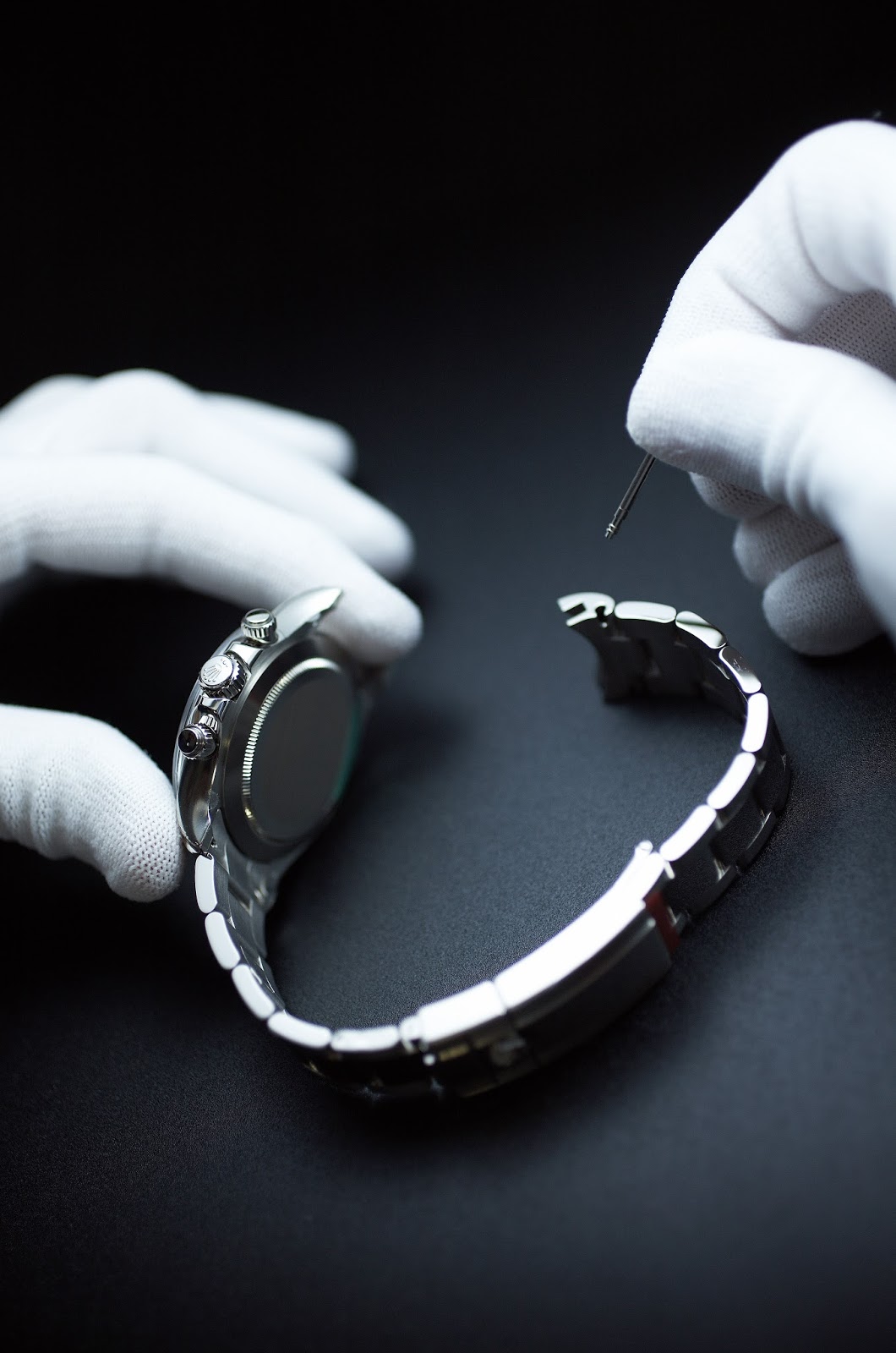

When Iga Świątek and Carlos Alcaraz hoisted their trophies on the clay courts of Roland-Garros last year, gone were their terry-cloth wristbands. In their place were Rolex watches—their gold crown logos a ubiquitous presence in the professional tennis world.
Rolex has been the official timekeeper of the French Open since 2019, when it replaced fellow Swiss watchmaker Longines and rounded out its portfolio of sponsorships of all four Grand Slam tournaments. Now, the top matches in the world are played against a backdrop of green Rolex signage, with gilded clocks displaying the time—and the Rolex brand—from the corner of the court. And though Roger Federer, likely its best-known ambassador (or “testimonee” in Rolex parlance), retired from the pros a few years ago, the watchmaker’s roster today includes many of the sport’s highest-ranked players.
“It’s almost impossible to think about tennis without thinking about Rolex, and that comes both from the breadth of their assets and from the continuity of their investments,” Ricardo Fort, the founder of Sport by Fort Consulting and former head of global sponsorship teams at Visa and The Coca-Cola Company, tells Front Office Sports.
While Rolex’s relationship with Roland-Garros was initially focused on brand visibility and timekeeping, it has now evolved into a “strategic alliance,” says Arnaud Delaplace, partnerships director at the Fédération Française de Tennis, the governing body that organizes the tournament. “Rolex is an integral part of the Roland-Garros experience. It’s a partnership built not just on branding, but on shared values and mutual elevation.”
It’s the kind of association that most marketers dream of, especially as the luxury world increasingly sees brand-building opportunities in sports. Along with tennis, Rolex has ties to golf, yachting, motorsports, and equestrian, all of which it has cultivated over decades. The company has used feats of athleticism in its advertising since the 1920s, when swimmer Mercedes Gleitze swam the English Channel in a Rolex Oyster, which it then touted as “the wonder watch that defies the elements.” Still, it wasn’t until the 1960s that the watchmaker made a strategic pivot that would transform its identity—and set the tone for an entire industry.

Susan Mullane-Imagn Images
According to Pierre-Yves Donzé, a professor of business history at Osaka University and the author of The Making of a Status Symbol: A Business History of Rolex, the brand began working with New York advertising agency J. Walter Thompson, which steered its client away from solely touting their watches’ technical prowess.
“There was a very long relationship between sports timing and Swiss watchmakers before Rolex. … But the objective was to advertise precision and performance,” Donzé tells FOS. Instead, the agency advised Rolex to appeal to customers’ desire for personal excellence and sense of their own potential heroism. In one well-known series of ads, images of sailing feats, icy slopes, and speeding race cars accompanied variations of the copy: “If you were here tomorrow … you’d wear a Rolex.” The brand also brought athletes further into the fold during this time, signing star golfer Arnold Palmer and pro skier Jean-Claude Killy in what would become two of its most significant long-term partnerships.
Rolex had established a groundbreaking strategy: After all, Palmer didn’t wear the watch to improve his game—in fact, he didn’t wear it on the course at all, including in Rolex ads. Rather, he appealed to consumers on a personal level as a charismatic, stylish sportsman at the top of his game. “It was because he was excellent that he embodied the values of the brand,” explains Donzé. “It’s not an instrument, Rolex; it’s an accessory to show your social status.”
The brand’s distinct identity became rooted not just in precision engineering but in a successful lifestyle. Rolex was no longer merely a watch—it was a symbol of achievement.
This, as it turned out, was a compelling draw for customers and helped catapult the brand to the top of its industry. Today, Rolex dominates its peers, accounting for more than 32% of the Swiss watch market, according to estimates by Morgan Stanley. The company has been owned by a private charitable trust since the death of its founder, Hans Wilsdorf, in 1960, and doesn’t publicly disclose sales figures. Per Morgan Stanley, though, in 2024, the brand sold more than one million timepieces, recording estimated sales of 10.6 billion Swiss francs ($12.86 billion).
Scaling an audience while maintaining the exclusivity required in luxury branding is a challenge, and tennis is one of the few sports that offers both. Until this year, Rolex was also the official timekeeper for Formula One for over a decade as the races gained more and more mainstream appeal. This season, though, the brand was replaced by watchmaker TAG Heuer as part of a 10-year, multibrand deal between F1 and the world’s largest luxury group, LVMH, reportedly worth more than $100 million per year.
“I think that it’s probably safe to say that part of the reason TAG Heuer and LVMH were very interested in that Formula 1 relationship was the fact that Rolex had had it for so long, and it clearly had paid dividends for the brand,” Brendan Cunningham, a professor of economics and the author of Selling the Crown: The Secret History of Marketing Rolex, tells FOS.
Still, the landscape of F1 has changed significantly in recent years, with new tech, crypto, and fast food sponsors entering the fray and viewership ballooning during the COVID-19 pandemic following Netflix’s docuseries Formula 1: Drive to Survive. While these are positive developments for the growth of the sport, Fort speculates Rolex may not have signed on if the opportunity were presented today.
TAG Heuer, meanwhile, has both a legacy in motorsports (it was the first brand to sponsor a team in 1971) and a more approachable price point than its predecessor (around $1,500 for an entry-level watch compared with upward of $6,500 for a Rolex). As part of the partnership, the LVMH-owned brand will also become the first title sponsor of the Monaco Grand Prix this month, giving it a substantial boost in international visibility.
Whether the TAG name will eventually be synonymous with F1 remains to be seen, but there is an established playbook it could follow. “Every new brand, luxury or non-luxury, that is interested in using sports to differentiate itself and be more attractive to its consumers can learn from Rolex,” says Fort, pointing also to Heineken’s relationship with F1, which includes three Grand Prix title sponsorships and a partnership with world champion Max Verstappen, and Coca-Cola’s with soccer, which spans grassroots programs, major tournaments, and more than 100 professional clubs, teams, and federations globally.
Of course, very few brands have the resources to commit to a sport so holistically—never mind compete with Rolex and LVMH where they have already staked a claim—but smaller luxury brands have found creative avenues.
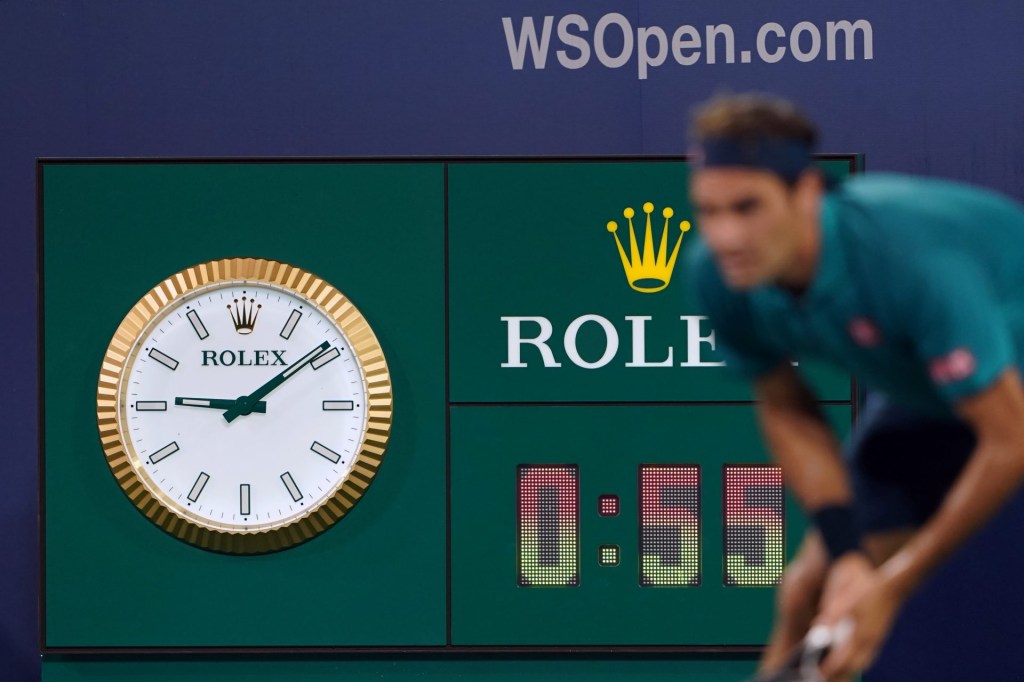
Aaron Doster-Imagn Images
Cunningham notes Rolex typically sticks to individual sports, in which “it’s more possible for a personality to pop out and be connected with the brand.” This has left a gap in team sports—one that Swiss watchmaker Breitling moved into in 2024 with the launch of an official NFL collection spanning all 32 teams in the league. The limited run of watches retailed for $9,200 each, and according to watch outlet Hodinkee, it may have been only the beginning of a larger partnership with the league, giving Breitling a valuable platform in the American market.
For brands, sponsorships are shortcuts to awareness, credibility, and storytelling, says Fort. Nowhere is its storytelling power clearer than in Rolex’s just-launched documentary series chronicling the triumphs and perseverance of various members of the “Rolex Family,” including tennis stars Coco Gauff—whose video has racked up more than six million views in a few days—and Carlos Alcaraz. The series leverages archival and contemporary footage and intimate interviews not just to market watches, but also to create a narrative around excellence on and off the court.
At Roland-Garros, the brand’s mythos adds a sense of gravitas to the tournament’s wins and losses.
“Rolex brings something deeply emotional and symbolic to Roland-Garros. Its presence creates an atmosphere—a quiet but powerful signature that gives the tournament a sense of timelessness,” says Delaplace.
NIL
Zac Selmon addresses why Mississippi State invests NIL, resources in baseball
Mississippi State Athletic Director Zac Selmon made a splash earlier this month when he poached National Championship winning coach Brian O’Connor from Virginia to replace Chris Lemonis, who was fired mid-season. During O’Connor’s time with the Cavaliers, he led the program to an 885-370-2 (362-234-1) overall record. In that time, he was named ACC Coach […]
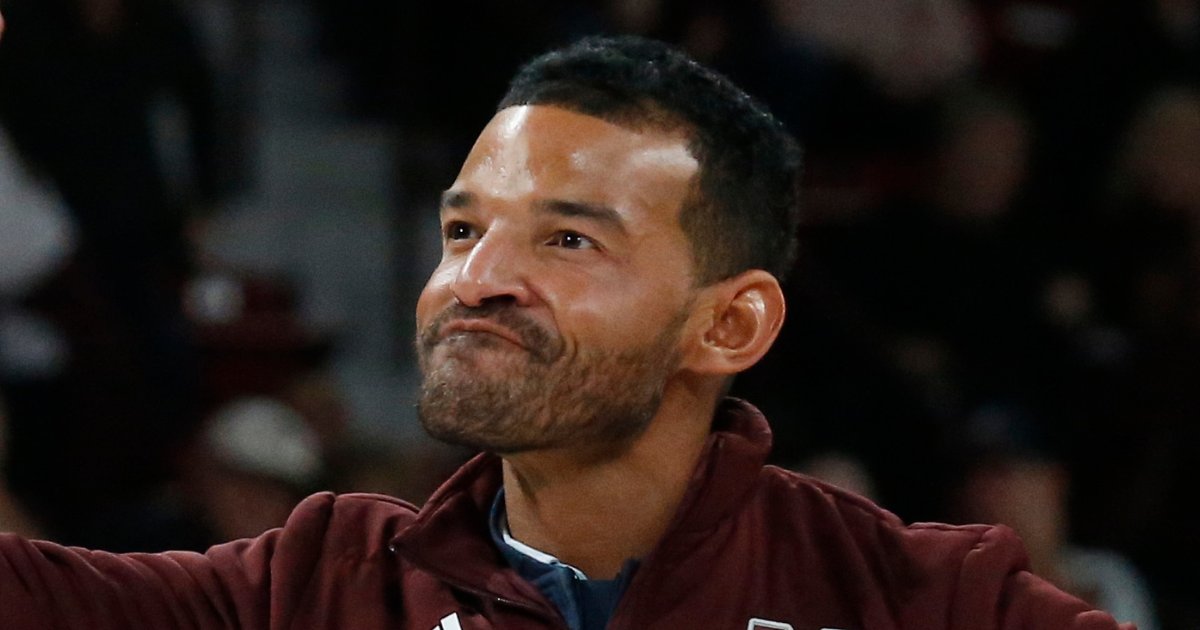
Mississippi State Athletic Director Zac Selmon made a splash earlier this month when he poached National Championship winning coach Brian O’Connor from Virginia to replace Chris Lemonis, who was fired mid-season.
During O’Connor’s time with the Cavaliers, he led the program to an 885-370-2 (362-234-1) overall record. In that time, he was named ACC Coach of the Year five times, helped the Cavaliers to two ACC titles, made seven total trips to the Men’s College World Series and won a National Championship in 2015.
After winning the National Championship in 2021, Mississippi State posted just a 129-102 (50-70) record over the next four seasons. In that span, the Bulldogs made two NCAA Tournaments but failed to advance to a Super Regional.
Selmon explained why this was unacceptable and why they’ve spent the resources to completely rebuild the Mississippi State baseball program (from the players to the staff) this offseason. Simply put, they want to get back to Omaha.
Selmon wants to dog-pile in Omaha
“It’s important because of the players we’ve had here,” Selmon said. “Throughout this process, I’ve heard from so many great players. It’s household names that you grew up listening to or knowing who they were. I’m blessed to have coach [Ron] Polk here everyday. To get to be around people like that, you start to know what the expectation is. You can’t do anything now unless you put resources behind it. So much of our business has changed and we’ve had some unbelievable supporters that have stepped up throughout this entire year and specifically throughout this week because they want to be a part of it.”
Dudy Noble Field, which opened in 1967, is often regarded as one of the best stadiums in all of college baseball. It set its record attendance of 16,423 fans back in 2023, showing how massive fan support for baseball is at the university.
“Our job is to make sure we put our programs in a position to be successful, and we can’t do it in this era without a lot of support,” Selmon said. “For us, we’re committed to making sure we put our coaching staff in a position to where we fast forward 20 years from now, we see letter-winners come back and say ‘man, do you remember that time we dog-piled in Omaha?”
“It starts with the investment we made today, and clearly it’s something we know it’s going to be so good for not only our athletics department, but our entire institution and the state of Mississippi. That’s something we’re really excited about.”
NIL
UofL vs Miami super regional schedule
Louisville baseball coach, players on super regional win vs. Miami Louisville baseball beat Miami 8-1 in the NCAA Super Regional Friday. The Cardinals are one win away from going to the College World Series in Omaha. The ACC will have at least one team in the 2025 College World Series bracket with Louisville baseball hosting […]

Louisville baseball coach, players on super regional win vs. Miami
Louisville baseball beat Miami 8-1 in the NCAA Super Regional Friday. The Cardinals are one win away from going to the College World Series in Omaha.
- The ACC will have at least one team in the 2025 College World Series bracket with Louisville baseball hosting Miami in NCAA Tournament super regionals.
- Louisville routed Miami 8-1 in Game 1 at Jim Patterson Stadium on Friday thanks to impressive pitching by righty Patrick Forbes and clutch hitting by Jake Munroe. The Hurricanes won Game 2.
Coverage from the game:
Louisville baseball still win away from College World Series after falling short vs. Miami
Coverage during the game:
The ACC will have at least one team in the 2025 College World Series bracket. Louisville baseball and Miami are set to play in Game 2 of the NCAA Tournament super regionals at 11 a.m. today. Both teams have experience playing in Omaha, though Louisville has been most recently.
The Cardinals routed Miami 8-1 Friday on a rainy evening at Jim Patterson Stadium thanks to impressive pitching by righty Patrick Forbes and clutch hitting by Jake Munroe.
Miami’s last trip to the CWS was in 2016, and U of L went three years later. So, which one will return to Omaha this year?
Stay tuned below for updates throughout the second game of the Louisville vs. Miami super regional series.
Stream Louisville baseball vs. Miami (free trial)
The Cards’ rally fell short, after bringing the tying run to the plate with no outs.
1 run, 2 hits, 0 errors, 2 LOB
Miami’s Daniel Cuvet hit his 18th homer on the season with a three-run shot off Starke.
3 runs, 3 hits, 0 errors, 0 LOB
The Canes brought their closer Brian Walters, who has 10 saves this season, and he got the Cards out in order.
0 runs, 0 hits, 0 errors, 0 LOB
Dorian Gonzalez hit a lead-off double and was brought home by a Renzo Gonzalez single.
1 run, 2 hits, 0 errors, 1 LOB
The Cards brought in left hander Ty Starke to relieve Jack Brown, who faced five batters in 1.1 innings. Starke will face Renzo Gonzalez with a runner on third and one out.
Just when it seemed the Cards bats had cooled off, Eddie King Jr., belted his second homer of the game to tie the score.
1 run, 1 hit, 0 errors, 0 LOB
The Cardinals turn a 5-4-3 double play to eliminate the Hurricanes’ scoring opportunity.
0 runs, 1 hit, 0 errors, 0 LOB
Jack Brown will start the sixth inning on the hill for the Cardinals. Wyatt Danilowicz ends his day with a strikeout and walk without giving up a hit over 1 1/3 innings.
The Hurricanes retire the side to preserve their one-run lead.
0 runs, 0 hits, 0 errors, 0 LOB
After walking one batter and hitting another, Wyatt Danilowicz made the final two plays to end the inning.
0 runs, 0 hits, 0 errors, 2 LOB
Eddie King, Jr. and Garret Pike are left stranded after Carson Fischer struck out the final two batters.
0 runs, 0 hits, 0 errors, 2 LOB
Jake Ogden’s two-out, three-run home run helped the Hurricanes regain the lead.
4 runs, 4 hits, 1 error, 2 LOB
Tucker Biven’s day ends with him allowing five runs, one earned, on seven hits with a strikeout and two walks in 3 2/3 innings. Wyatt Danilowicz will now enter the game for the Cardinals
With the bases loaded and two out, Kamau Neighbors got caught stealing to end the inning.
0 runs, 2 hits, 0 errors, 2 LOB
Evans threw 2/3 of an inning, allowing a hit while plunking a batter, and is replaced by Carson Fischer.
After giving up a leadoff home run to Jake Munroe and a single to Tague Davis in the top of the fourth inning, Griffin Hugus is replaced on the mound by Rob Evans. Hugus ended the day allowing four earned runs on five hits with one strikeout and two walks in three-plus innings on the mound.
The Cardinals preserve their lead with a 1-2-3 inning.
0 runs, 0 hits, 0 errors, 0 LOB
Eddie King, Jr.’s two-run home run to left-centerfield highlighted the Cardinals’ three-run inning.
3 runs, 2 hits, 0 errors, 0 LOB
The Hurricanes strike first with Michael Torres’ two-out RBI base hit.
1 run, 2 hits, 0 errors, 2 LOB
Eddie King, Jr. and Tague Davis were left stranded at the corners after Griffin Hugus struck out Kamau Neighbors.
0 runs, 1 hit, 0 errors, 2 LOB
Jake Ogden is left stranded after hitting a leadoff double as the Cardinals retired the next three batters.
0 runs, 0 hits, 0 errors, 0 LOB
Matt Klein reached base after getting hit with a pitch, but a Hurricanes double play ended the inning.
0 runs, 0 hits, 0 errors, 0 LOB
Tucker Biven will get the start for the Cardinals with a trip to Omaha on the line. The right-handed pitcher is 3-0 on the season with 31 strikeouts over 35 innings and 20 appearances with four starts.
- Date: Saturday, June 7
- Time: 11 a.m. ET
- Where: Jim Patterson Stadium
Louisville baseball’s Dan McDonnell on pitcher Patrick Forbes’ talent
Louisville baseball coach Dan McDonnell explains what makes pitcher Patrick Forbes a great athlete and Forbes’ future at the professional level.
Here is the latest college baseball schedule and NCAA Tournament bracket update.
Reach Louisville football, women’s basketball and baseball beat writer Alexis Cubit at acubit@gannett.com and follow her on X at @Alexis_Cubit.
NIL
5 former College Football stars deserve the most back pay from the NCAA settlement
On Friday Night, College Football changed forever as Judge Claudia Wilken signed off approving the settlement in the landmark House Vs NCAA case. The case brings about wholesale changes to College Athletics like we know it as revenue sharing, roster limits, NIL regulations, and a ton of new aspects are brought to the sport. As […]
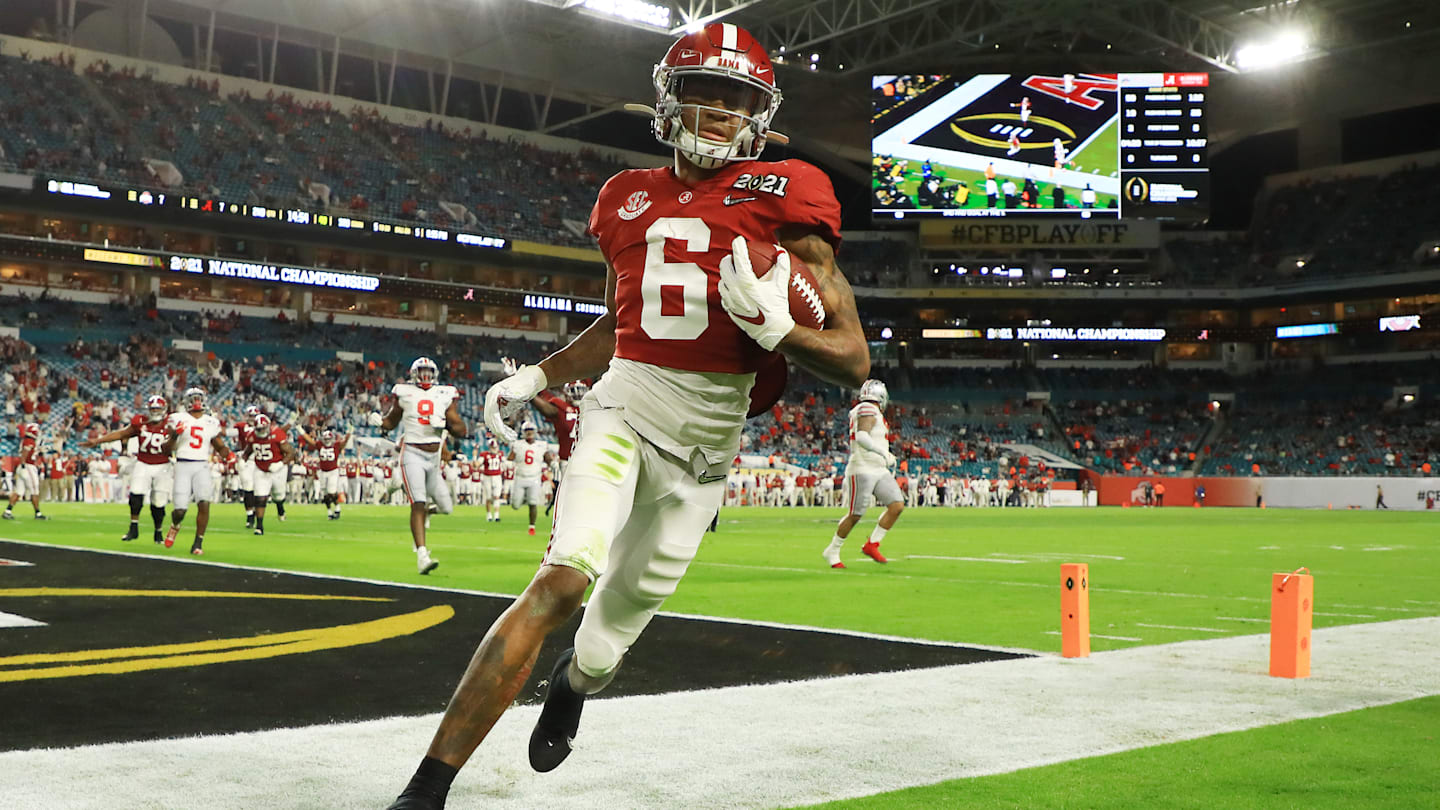
On Friday Night, College Football changed forever as Judge Claudia Wilken signed off approving the settlement in the landmark House Vs NCAA case. The case brings about wholesale changes to College Athletics like we know it as revenue sharing, roster limits, NIL regulations, and a ton of new aspects are brought to the sport.
As part of the settlement, the NCAA also agreed to back pay former athletes $2.8 billion over the next ten years. The athletes that will receive the funds had to of played since 2016 through current day. It seems more fair that the players prior to 2020 who weren’t in this modern era should get the lions share of the funding.
Based on star power, potential earnings they missed out on, and their impact to the game, 5 former College Football stars deserve the backpay more than anyone else.
Part of the reason that many of the athletes feel they missed out on NIL is the fact that they emerged as stars as true freshmen before putting together great careers as a whole. DeVonta Smith perfectly fits the bill as he played sparingly as a Freshman before catching the National Championship game winner against Georgia.
From that moment on, DeVonta Smith and Tua Tagovailoa would’ve been NIL stars with their entire careers ahead of them. Instead, DeVonta Smith’s Sophomore and Junior seasons were among some of the best in the Country in a star-studded Alabama offense.
If Devonta Smith wasn’t earning a ton by his Senior season, it would’ve been more than enough for him to earn massive NIL deals. Winning the Heisman Trophy and a National Championship as a Senior would’ve made Smith one of the most sought after players in recent history.
Like DeVonta Smith, Tua Tagovailoa’s burst onto the scene in the National Championship Game would’ve been a great moment to launch him into superstardom. Over the next two seasons, Tagovailoa was the engine of the most explosive offenses of Nick Saban’s time in Tuscaloosa which would’ve made him an attractive option for companies spending NIL money. Luckily in Tua’s case an d for some others on this list, it’s tough to feel too bad seeing the NFL contracts for quarterbacks.
The NIL backpay dating back to 2016 puts Lamar Jackson solely in the conversation as one of the athletes that could’ve cashed in. After winning the Heisman Trophy in 2016, Lamar Jackson would’ve had a whole season to cash in on the fact that he had just won the Heisman Trophy. In a State where we’re seeing athletes cash in with big deals in basketball, Jackson would’ve gotten a massive NIL deal simply not to transfer elsewhere.
Joe Burrow’s case is a little more difficult to make just because of when in his career he became a superstar. When Joe Burrow fully became a household name he was in the midst of his Senior season which means he truly missed out on half of a season earning NIL deals. Based on how popular the team became that season, Joe Burrow likely would’ve made himself a ton of money after that Alabama game.
During his tenure in College Football, there wasn’t a more electric player to watch than Baker Mayfield. He first showed up on the scene as a walk on at Texas Tech starting the team’s season opener but, left after one season. When Mayfield arrived at Oklahoma he took over the College Football world, winning the Heisman Trophy in 2017 while finishing in the Final 4 every season at Oklahoma.
When Mayfield got to the NFL, he quickly became the pitch man for several companies with commercials during almost every commercial break. Given that Baker Mayfield was the most polarizing player in the sport, he would’ve gotten some massive NIL deals during his time.
More College Football News:
NIL
Roster limits, revenue sharing and new NIL rules are announced by NCAA
The NCAA makes changes to its roster limits, NIL guidelines and revenue sharing with players On Friday night, the NCAA got news that its hearing in the House vs. NCAA suit had been resolved, with a significant amount of changes heading across college sports as On3 reports. It detailed the biggest change was revenue sharing […]
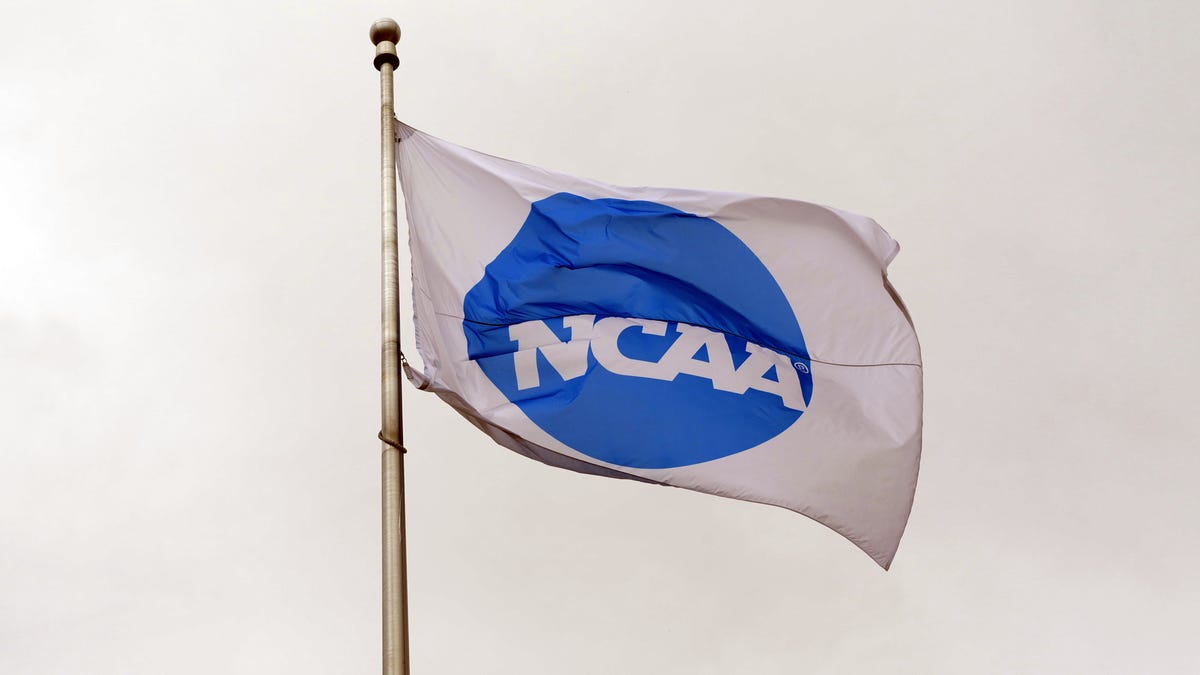
The NCAA makes changes to its roster limits, NIL guidelines and revenue sharing with players
On Friday night, the NCAA got news that its hearing in the House vs. NCAA suit had been resolved, with a significant amount of changes heading across college sports as On3 reports.
It detailed the biggest change was revenue sharing with the players, sharing up to $20.5 million, with football most likely getting 75% of the cut, and men’s basketball next at 15%. Women’s basketball will get around 5% and the rest will be split with the other sports.
As for program spending, each major school will have around $14 million this coming season. It will be very interesting to see how this is handled across the nation. There is some backpay that the NCAA will have to make as well, a whopping $2.776 billion over the next 10-years as the report states.
As for Name, Image and Likeness, any deal worth more than $600 has to go through the clearinghouse, and if rejected that school and athlete could face ineligibility or the university a fine. On3 mentioned that “Deloitte officials reportedly shared that 70% of past deals from NIL collectives would have been denied,” so big changes are coming with how the players get compensated.
Not only that On3 says that roster limits will be imposed, with football being allowed 105 members, basketball rosters at 15, soccer having 28, softball at 25 and volleyball at 18. Notre Dame football head coach Marcus Freeman has prepared for this, as surely the rest of the program’s have done the same in South Bend.
It will definitely change the path of college sports, and we will see if this is the right decision.
NIL
House v. NCAA settlement quells issues in college sports? No, but be prepared for a whole …
Judge Claudia Wilken approved the House v. NCAA settlement late Friday, ending three federal lawsuits that alleged the NCAA was illegally limiting the earning power of student-athletes in college. CBS Sports’ John Talty has a nice piece on it. My favorite line is his last. “There’s never been a better time to be a lawyer […]


Judge Claudia Wilken approved the House v. NCAA settlement late Friday, ending three federal lawsuits that alleged the NCAA was illegally limiting the earning power of student-athletes in college. CBS Sports’ John Talty has a nice piece on it. My favorite line is his last.
“There’s never been a better time to be a lawyer with an interest in college sports.”
Yeah, that’s where this is headed.
What happened Friday in California is significant, no doubt. But anybody describing it as a solution to the issues ailing college athletics simply lacks an understanding of the history of NCAA sports and exactly what will and won’t be allowed moving forward.
The end of chaos?
Nah.
It’ll just be a different kind of chaos that leads to more legal threats and billable hours than you can wrap your mind around. Plus, high-level cheating will return. Oh, we’re back baby! Illegal cash-deals are on tap.
The biggest winners and losers from House v. NCAA settlement: Amateurism is dead and the class divide grows
John Talty
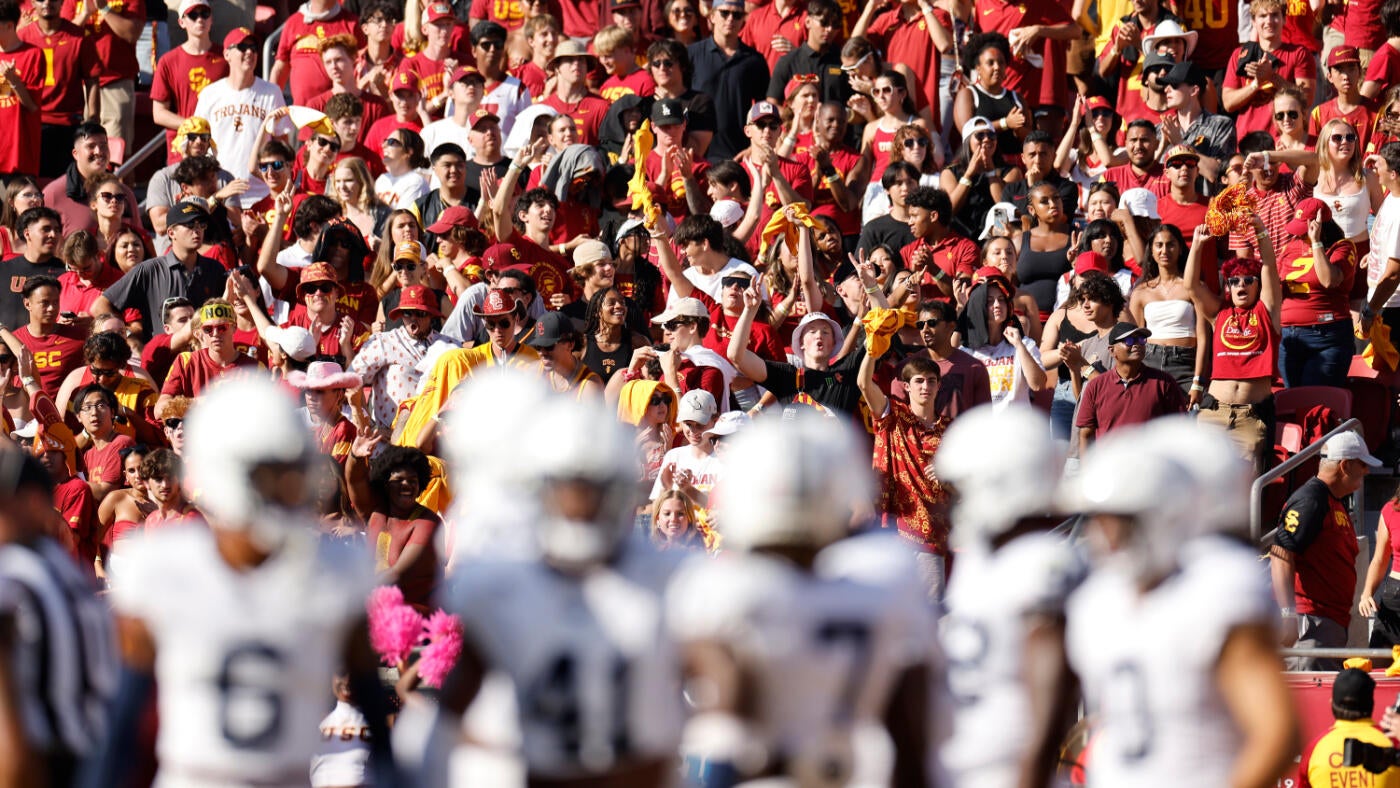
Before I explain why, let’s go over the basics.
This settlement will allow schools to start directly paying athletes — for the first time ever — next month with an expected salary cap of roughly $20.5 million. That’s $20.5 million for all sports to be distributed however each school sees fit. Additionally, all future NIL deals between boosters/collectives and athletes will be vetted by a new entity designed to ensure they’re for valid business purposes and not merely the kind of recruiting incentives that have been flying around the country in recent years.
That paragraph is littered with problems.
Let’s start with the salary cap. Simply put, it won’t work as intended.
As Matt Norlander and I have discussed many times on the Eye On College Basketball Podcast, the most obvious problem with a salary cap for entire athletic departments is that all athletic departments don’t have football rosters to purchase. In other words, at a place like Alabama, the school is expected to devote the majority of that $20.5 million to football, leaving relatively little for other sports, most notably men’s basketball. Meantime, at a place like St. John’s, where there is no football, most of that $20.5 million could be spent however Hall of Fame basketball coach Rick Pitino sees fit.
Now, let’s be real.
Do you actually think a SEC school with millions tied up in football is going to concede a recruiting battle in basketball to a Big East program sans football because, you know, the money just isn’t in the budget, according to the rules? LOL. When it comes to that, not all basketball staffs, but certainly lots, will simply do what they’ve always done, i.e., find a way to get the player even if it requires circumventing the rules.
Again, this weekend, cheating returned to college sports.
It’s inevitable.
Every Power Four conference features a coach who has violated one recruiting rule or another. If you think they won’t do it again, if required, you’re silly. And now every time a player picks a school with little known-money left in the budget over a school that’s reportedly offering much more, fans on the wrong end of the commitment will assume something happened in violation of the rules and scream for an investigation.
We lived that life for decades. Who really wanted that again?
And don’t even get me started on the document Power Four conferences are circulating that’s intended to force schools to play by the rules or face serious consequences. Among other things, schools are being asked to forfeit their right to legally challenge the new enforcement entity on any and all decisions. Reportedly, schools that refuse to sign the document could face expulsion from their conferences.
Please.
All it will take for this goofy idea to fail is one powerful school — like, say, Texas or Ohio State — declining to sign it, at which point other schools will say, “If they’re not signing it, we’re not signing it.”
Then what?
Do you really think the SEC is going to expel Texas? Do you really think the Big Ten is going to expel Ohio State? Do you really think the television networks paying billions to those conferences would allow it?
Please.
Now, to NIL.
According to the settlement, a new thing called the NIL Go clearinghouse will be charged with approving future NIL deals to ensure they are within a “reasonable range of compensation based on multiple factors.”
I look forward to the word “reasonable” appearing in court.
Don’t ever forget how we got here — specifically by the NCAA being sued repeatedly for illegally limiting the earning power of student-athletes. So what do you think is going to happen when a school with serious softball ambitions like Texas Tech offers a NIL deal worth more than a million dollars to the next NiJaree Canaday? Let me tell you. NIL Go will likely deem the deal “unreasonable” for obvious reasons and void it. Then everybody will be back in court based on the idea that, once again, a student-athlete’s earning power is being illegally limited.
Rinse and repeat.
Last month, NIL Go officials told ACC administrators that more than 70% of current NIL deals with booster collectives would have been denied according to the new rules. That suggests NIL Go will frequently be in the business of telling student-athletes they cannot take what somebody is willing to give them, and not every student-athlete will accept that decision without pursuing legal action.
The end of chaos?
Hahaha. No way!
Trust me when I tell you, this is only the beginning. Because when a solution to a problem just creates more problems, you’re not really fixing anything as much as you’re simply trading in one set of issues for a new set of issues that will have to be addressed again, sooner or later. Like Talty wrote, congrats to the attorneys. They’re the real winners here, as always.
NIL
Sons of Hall of Famers Included in Latest WWE NIL Class
The latest wave of WWE NIL signings include sons of WWE Hall of Famers among its crop of talented young athletes. The fifth wave of signings include: Fatima Katembo (Basketball) Jacob Henry (Amateur Wrestling, son of Mark Henry) Garrett Beck (Lacrosse) Zuriel Jiménez (Track and Field) Bianca Pizano (Field Hockey) Hidetora Hanada (Football) Madison Kaiser […]
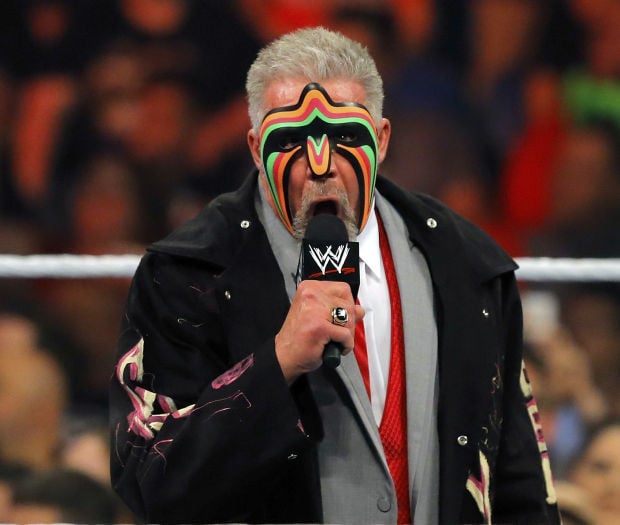


The latest wave of WWE NIL signings include sons of WWE Hall of Famers among its crop of talented young athletes. The fifth wave of signings include:
- Fatima Katembo (Basketball)
- Jacob Henry (Amateur Wrestling, son of Mark Henry)
- Garrett Beck (Lacrosse)
- Zuriel Jiménez (Track and Field)
- Bianca Pizano (Field Hockey)
- Hidetora Hanada (Football)
- Madison Kaiser (Ice Hockey)
- TJ Bullard (Football)
- Kerrigan Huynh (Track and Field)
- Brock Rechsteiner (Football, Son of Rick Steiner)
- Gina Adams (Basketball)
The WWE NIL program launched in 2021 and gives young athletes the opportunity to access WWE’s state-of-the-art training programs. The signings are also able to access WWE’s expertise on controlling their name, image, and likeness in the wider world of professional athletics.
It remains to be seen if any of these signings go on to become WWE Superstars. Whatever’s next, WWE is investing heavily in the future.
-

 College Sports3 weeks ago
College Sports3 weeks agoPortal Update – Basketball and Gymnastics Take Hits
-

 College Sports3 weeks ago
College Sports3 weeks agoPortal Update – Basketball and Gymnastics Take Hits
-

 Professional Sports2 weeks ago
Professional Sports2 weeks agoJon Jones answers UFC retirement speculation as fans accuse champion of 'holding the belt …
-

 Health3 weeks ago
Health3 weeks agoBYU women's basketball guard injures ACL twice
-

 NIL2 weeks ago
NIL2 weeks ago2025 NCAA Softball Tournament Bracket: Women’s College World Series bracket, schedule set
-

 Youtube3 weeks ago
Youtube3 weeks agoXavier Legette taught Marty Smith his signature celly
-

 College Sports3 weeks ago
College Sports3 weeks agoNCDC Commitment Profiles: Cyclones’ Martins Moving On to Saint Anselm College • USPHL
-

 College Sports3 weeks ago
College Sports3 weeks agoIU basketball recruiting
-

 High School Sports3 weeks ago
High School Sports3 weeks agoToday in the MHSAA
-

 Motorsports2 weeks ago
Motorsports2 weeks agoWhy IHOP Rode With Dale Earnhardt Jr. In Amazon NASCAR Debut







 REACTION to Cowboys acquisition
REACTION to Cowboys acquisition  | First Take
| First Take



























